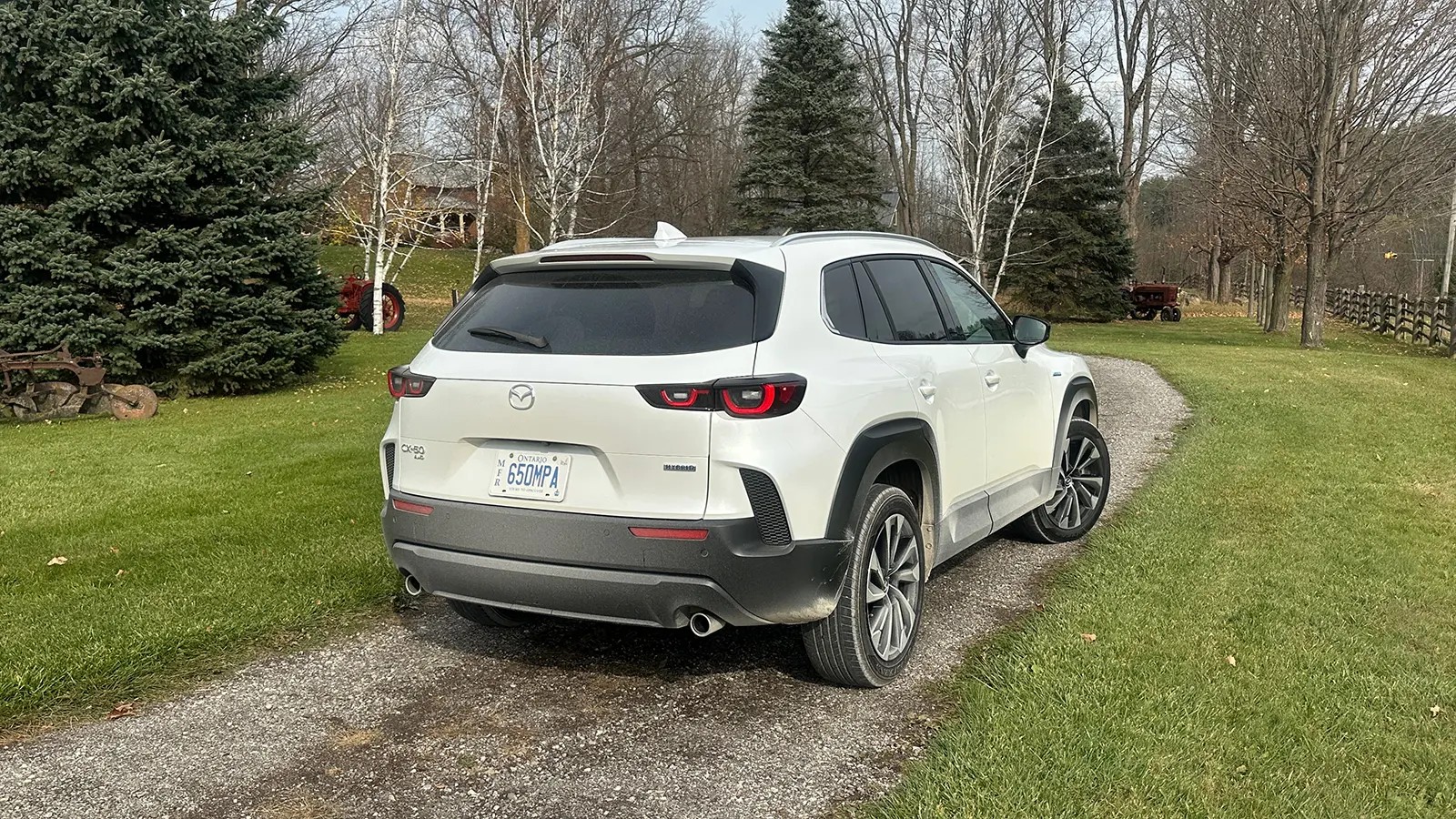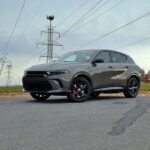While the automotive world is buzzing about fully electric vehicles, the unsung heroes of fuel efficiency, compact hybrid SUVs, are making significant strides in performance and technology for 2025. These gas-electric marvels offer the best of both worlds: reduced emissions and impressive mileage without the need to plug in. They cleverly harness energy from deceleration and braking, maximizing fuel savings in urban environments.
This technology, pioneered 25 years ago with models like the Toyota Prius and Honda Insight, has matured significantly. Today’s compact hybrid SUVs boast advanced transmissions and sophisticated computer controls, offering a seamless and efficient driving experience.
For those who navigate city streets daily and lack convenient overnight charging, these hybrid SUVs present an ideal entry point into electric mobility. They provide substantial fuel savings and lower emissions compared to traditional gasoline vehicles, making them a smart choice for the environmentally conscious driver.
Mazda CX-50 Hybrid: Efficiency Redefined with Mazda’s Signature Style
The Mazda CX-50, already known for its rugged appeal and stylish design, introduces an all-new hybrid variant for 2025. The CX-50 Hybrid seamlessly integrates Toyota’s renowned gas-electric powertrain, offering a blend of Mazda’s distinctive aesthetics and Toyota’s hybrid expertise. Sharing the same powertrain as the Toyota RAV4 Hybrid, it delivers 219 horsepower and 163 lb-ft of torque from a 2.5-liter inline-four engine, coupled with a CVT and an electric all-wheel-drive system powered by three electric motors.
While the CX-50 Hybrid prioritizes fuel efficiency over outright power compared to its gasoline counterparts, especially the turbo version, it aligns perfectly with the objectives of a hybrid SUV. In contrast to the Hyundai Tucson Hybrid, which offers a sportier N-Line option, the CX-50 Hybrid focuses on refined efficiency.
Boasting an EPA-estimated 38 mpg combined, the CX-50 Hybrid closely rivals the RAV4 Hybrid’s 39 mpg, demonstrating impressive fuel economy for its class.
Integrating Toyota’s Hybrid System (THS) into the Mazda CX-50 involved considerable engineering, resulting in subtle styling enhancements beyond hybrid badging. The CX-50 Hybrid features extended body cladding and a slightly taller roof to maintain a 7.6-inch ground clearance, accommodating the traction battery beneath the rear seat. Despite being longer than many competitors, its cargo space is slightly reduced to 29.2 cubic feet compared to other CX-50 models, and smaller than the RAV4 and Tucson Hybrids.
The CX-50 Hybrid truly excels in interior refinement, offering a subtly luxurious ambiance, particularly in higher trims. The Premium Plus model features two-tone leather seats with meticulous stitching, a rotary controller reminiscent of luxury brands, and user-friendly physical buttons for frequently used functions, minimizing touchscreen reliance.
While the panoramic sunroof enhances the cabin’s airy feel, the CX-50 Hybrid maintains a touch of classic Mazda charm. Analog gauges, limited LED accent lighting, and a moderately sized monochromatic infotainment screen (which comes alive with wireless CarPlay or Android Auto) contribute to its unique character.
The CX-50 Hybrid delivers a composed and quiet ride, surpassing even some Toyota hybrids in terms of noise dampening and overall refinement. It represents a sophisticated evolution for Mazda, prioritizing fuel efficiency without sacrificing the brand’s signature driving dynamics, though sportier features are reserved for other CX-50 trims.
Priced between $34,000 and $40,000 MSRP, the CX-50 Hybrid occupies the middle ground in the CX-50 lineup, positioned above gasoline models but below the more performance-oriented Turbo versions. This contrasts with the Hyundai Tucson Hybrid, which offers a broader spectrum of hybrid options at similar price points.
Hyundai Tucson Hybrid: A Spectrum of Hybrid Choices for Diverse Needs
Hyundai takes a more expansive approach with its popular Tucson model, offering a variety of hybrid options, including gas-only, sport-focused, and luxury-oriented hybrid trims, as well as a plug-in hybrid variant. The Tucson Plug-in Hybrid (PHEV) caters to those seeking maximum electric driving range for daily commutes (offering 33 miles of all-electric range) while retaining the flexibility of a gasoline engine for longer journeys.
The Tucson Hybrid N Line model, tested here, distinguishes itself with 19-inch wheels, black side mirrors, and dual exhaust tips, along with N Line badging. The entire Tucson lineup received a refresh for 2025, featuring updated LED lighting and wheel designs, further enhancing its sharp and modern aesthetic, setting it apart from more traditionally styled competitors.
Inside, the Tucson Hybrid N Line boasts a contemporary, all-digital twin-screen instrument panel, a departure from traditional gauges. Red stitching accents on the sporty seats, doors, armrest, and steering wheel, along with metallic pedals and an N-branded steering wheel, clearly signal its sporty intentions.
Performance matches the sporty styling, thanks to a responsive 1.6-liter turbocharged engine. It delivers a combined 231 horsepower and 258 lb-ft of torque on premium fuel, though it is designed to run on regular gasoline. Paddle shifters offer enhanced control over the six-speed automatic transmission, providing a more engaging driving experience compared to the CVTs found in competitors.
While not the most fuel-efficient in its class, the Tucson Hybrid N Line achieves a respectable 35 mpg combined, only slightly behind the Mazda, while offering considerably more engaging performance. The powertrain feels more refined than both the Mazda and even the Lexus in certain driving scenarios.
Despite its N Line sporty designation, the Tucson Hybrid N Line offers a comfortable ride, similar to the 2025 Tucson XRT, a new soft-roading trim. Intriguingly, even with its sporty cues, it includes “Baby Mode,” a driver-selectable feature that softens initial acceleration for passenger comfort, showcasing its family-friendly practicality.
The Tucson Hybrid also scores high on practicality with generous rear-seat space and a larger cargo area than the Mazda, outclassing the subcompact Lexus UX in overall spaciousness.
The Hyundai Tucson Hybrid N Line emerges as a well-rounded choice, blending sporty appeal with family-friendly sensibility and ample space, making it a compelling option in the best compact hybrid SUV segment.
Lexus UX300h: Compact Luxury with a Premium Price Point
The Lexus UX300h, formerly known as the UX250h, receives a name change and subtle updates for 2025. While offering both front-wheel and all-wheel drive configurations, it presents a noticeably smaller footprint and a less refined driving experience compared to the mainstream crossovers in this comparison, despite its similar price range.
Interestingly, the official fueleconomy.gov classifies the UX300h as a compact car, while the others are categorized as Small SUVs. The UX300h arguably leans more towards a subcompact crossover or hatchback in size, appearing significantly smaller when parked alongside the Tucson and CX-50. Despite not being direct market rivals, their price proximity invites cross-shopping consideration.
The Lexus UX300h’s smaller dimensions may appeal to urban drivers seeking parking ease. Its styling is arguably attractive, especially in the higher-trim F Sport version tested, which adds sporty visual elements like unique wheels, a black roof, and dark roof rails. However, the oversized Lexus grille might be polarizing on its compact frame.
The UX300h’s interior materials, design, driver comfort, and infotainment system are commendable, particularly for drivers under six feet tall, as front-seat space is comparable to the others. However, rear passenger and cargo space are where the UX300h’s smaller size becomes most apparent, with a mere 17.2 cubic feet of cargo capacity, less than half of the Tucson’s.
The UX300h’s gauges feel somewhat dated in a digital era, although it does offer a color head-up display, a feature not found in the other models compared. A larger 12.3-inch infotainment screen is now standard on most trims, modernizing the interior somewhat, but the abundance of physical buttons hints at a design from a pre-dominantly digital era – a comforting familiarity for some.
Significant powertrain updates include a shift-by-wire CVT in this fifth-generation hybrid system, making the UX the first Lexus to adopt a lithium-ion traction battery, unlike the nickel-metal hydride batteries in the Mazda and most Toyota hybrids.
Power output has increased to 196 hp, and fuel economy is impressive at 42 mpg combined for AWD models and 43 mpg for FWD. However, the engine’s noticeable harshness and noise, uncharacteristic of Lexus, remain, perhaps even more pronounced as the larger battery extends electric-only driving, highlighting the contrast when the engine engages.
The UX300h’s pricing is arguably its strongest suit. With a starting MSRP of $37,515 for the front-drive model and $43,035 for the F Sport AWD version, it offers a relatively accessible entry point into Lexus luxury. While offering upscale interior materials and design, the trade-off is reduced interior space.
Compact Hybrid Crossovers: Conclusion
Each of these compact hybrid crossovers presents a unique blend of strengths and weaknesses. However, the Hyundai Tucson Hybrid stands out as the most compelling overall package among these three.
It masterfully balances practicality and sporty appeal, wrapped in a modern and stylish design that promises to age gracefully. The Hyundai Tucson Hybrid’s well-rounded nature positions it as a top contender, unlikely to feel outdated even as electric vehicles become increasingly prevalent.
*All mileage claims are EPA estimated.

